
Meet us at Bengaluru Tech Summit in Hall No. - 1, Booth no. - C58
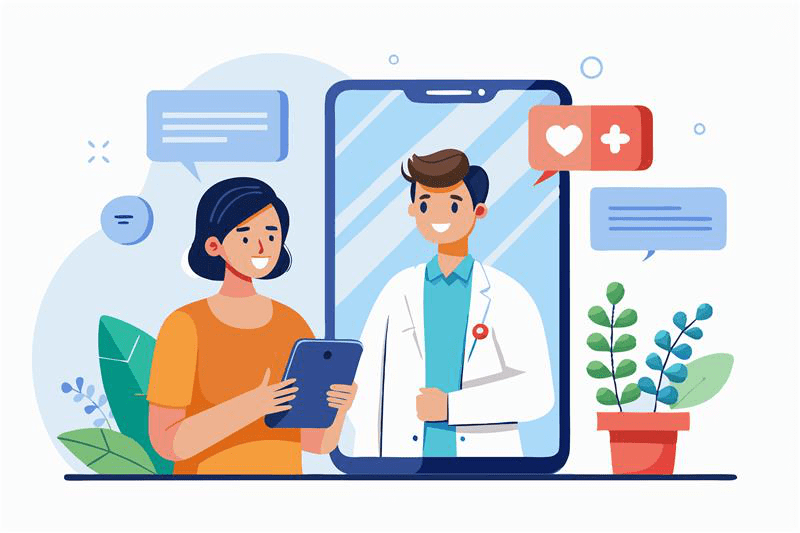
Telemedicine app development is a trend that has taken the digital healthcare world by storm! And, we’re not joking about this because it’s the reality of today, tomorrow, and beyond the healthcare industry!
So, what do you imagine when you think of telemedicine in general? A consultation app? Possibly some kind of a tidbit related to new offers or something like that? However, we can assure you that there is so much more to telemedicine than meets the eye.
Also, telemedicine, which is basically healthcare from a distance using tech, is getting bigger all the time. Experts think the market will hit USD 334.80 billion by 2032, growing about 16.3% each year. Telemedicine apps keep getting better, safer, and easier to use. EMed HealthTech says they're adding things like AI helpers, live data, and even augmented reality for checkups.
Moreover, Grand View Research says the telemedicine app market could hit over $380.3 billion by 2030. So, what’s the point in debating whether it’s worth investing in telemedicine or not? Because we know that there isn’t a better option than investing in telemedicine application development.
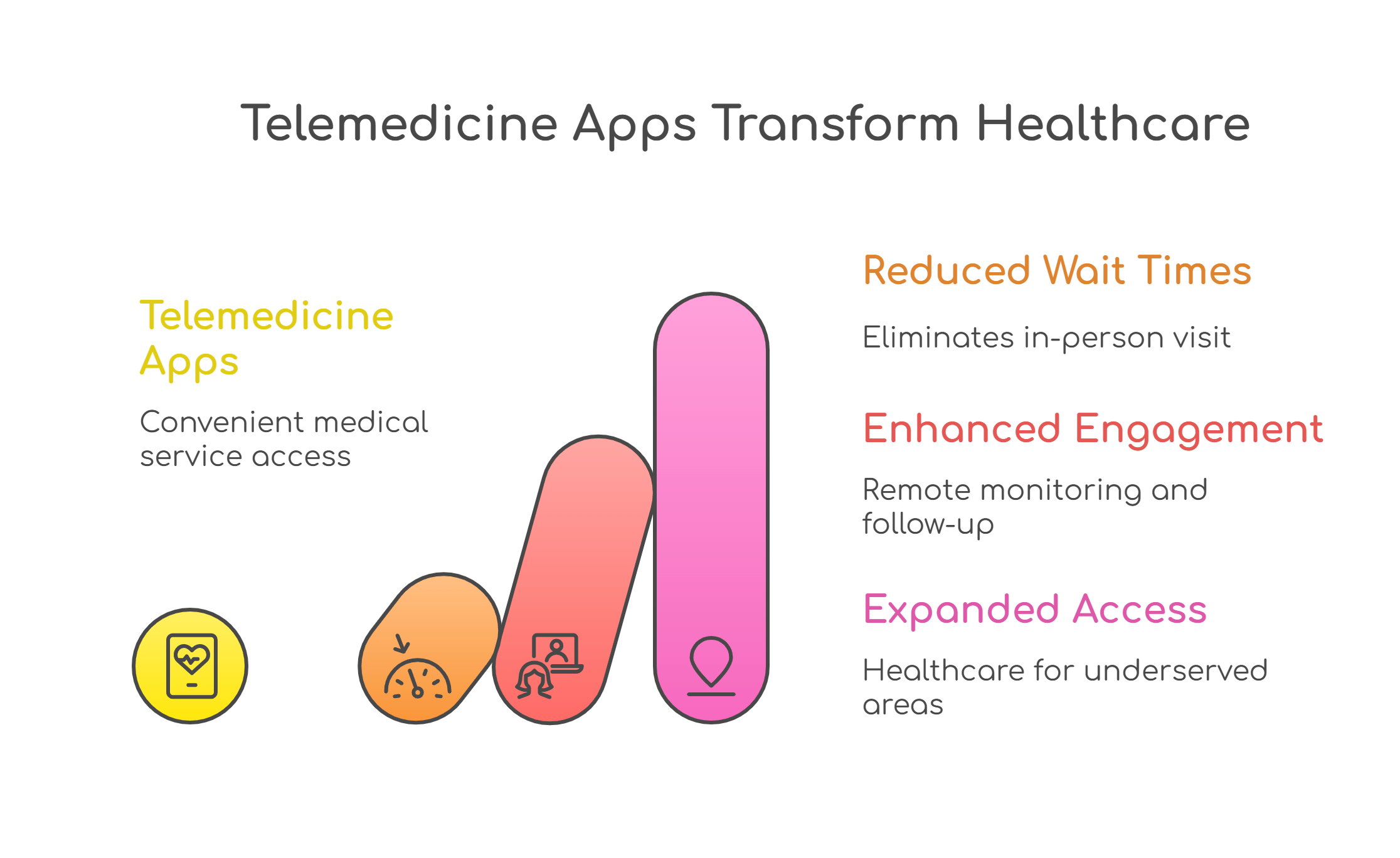
Telemedicine is all about tech that connects you with doctors online. Forget running to the clinic for every little sniffle or rash; that's the idea, anyway, with telemedicine's latest trends.
Healthcare has always been a bit of a hassle for most people. Long waiting hours, packed clinics, and the challenge of scheduling an appointment just to ask something basic. That’s where telemedicine apps have quietly stepped in and started changing the game.
Telemedicine isn't for emergencies or surgery, sure, but it's still changing how everyday healthcare works. It lets patients be more involved in their own health, and it gives doctors better ways to handle things.
Healthcare's changing quickly. Instead of only seeing doctors in person, waiting in lines, and getting paper prescriptions, you can now do a lot on your phone. Telemedicine is key to this change. Wondering if making a telemedicine app is worth it? Yeah, it is. Here's why.
People are way more okay with online doctor visits now. Doesn't matter if you're a busy city worker or someone in the sticks, everyone wants healthcare that's faster and simpler. Telemedicine apps aren't just a fad; they're how healthcare will be.
The pandemic got things moving faster, but folks stick around for the easy and handy access. Now, seeing a doctor online is normal for lots of people.
Old-school healthcare costs a ton, including clinics, workers, gear, and bills. But a telemedicine setup cuts those expenses way down.
Doctors save on running costs. Patients save on travel and waiting time, and often pay less for a visit. Everyone's happy, so it's a system that can grow.
The telemedicine market is expected to get huge soon. No matter if you're going for general health, mental health, skin stuff, kids' health, or long-term illness stuff, there's a spot for you .
And it's not just for selling directly to customers. Lots of hospitals, clinics, and health brands want to team up with or rebrand telemedicine options. That means you can make money in lots of ways.
Telemedicine really helps with access. If you're in a country where things are spread out or there aren't many doctors, getting to see one can be tough. But a telemedicine app? That gets rid of the problem by letting you chat with doctors, get prescriptions, and follow up, no matter where you are.
Putting money into this isn't just good for business; it also helps people stay healthier.
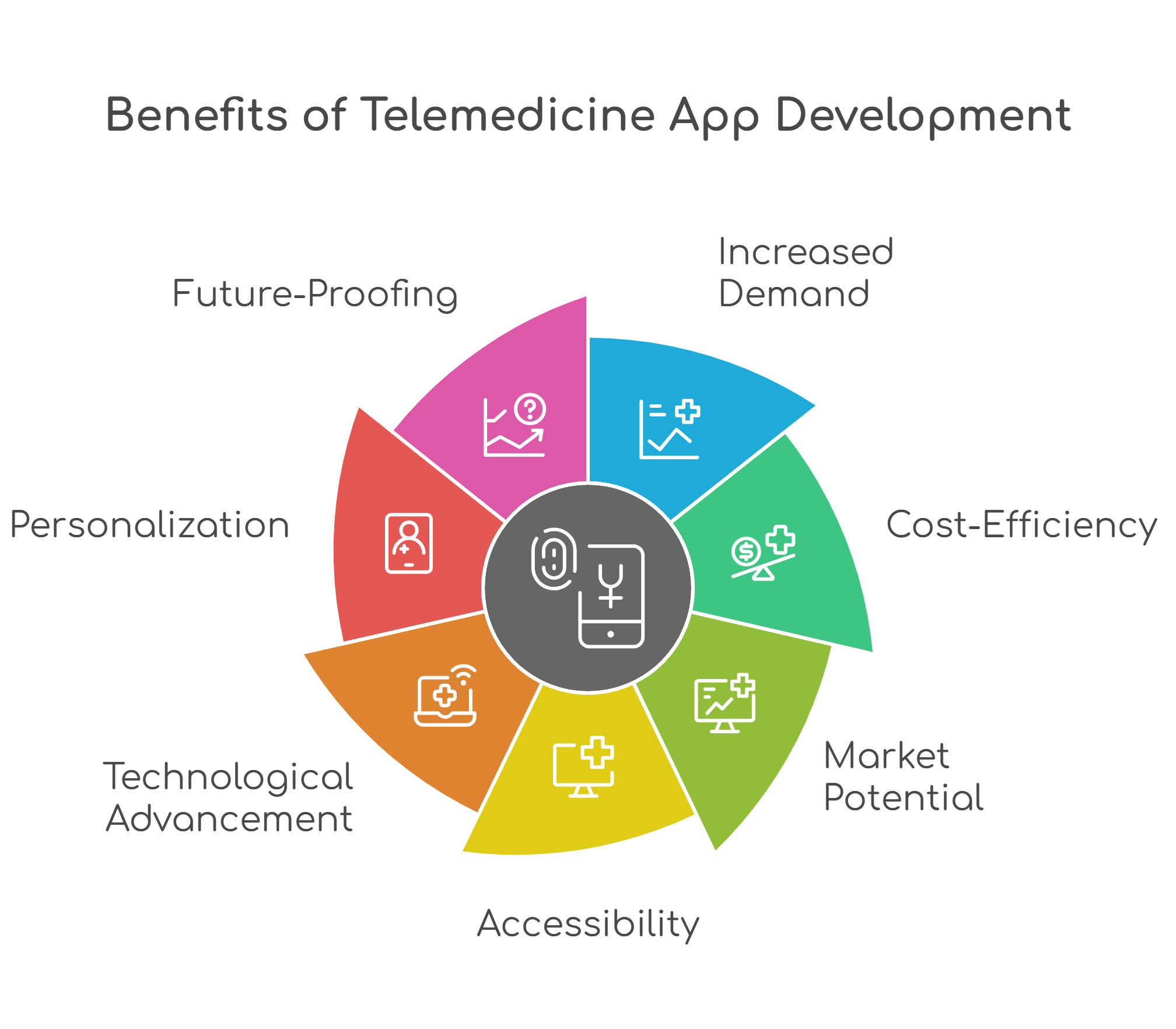
Telemedicine apps can do way more than just video calls. Think adding AI to figure out what's wrong, chatbots to help people decide what to do, online pharmacy hook-ups, booking lab tests, or even linking up with wearable devices to track health as it happens.
If you've got a great idea for something that can grow, is smart, and really makes a difference, telemedicine is your playground.
These days, healthcare is personal. People want things that fit them just right. If you grab data and study it well, your app can give them exactly that, like reminders to take pills, advice on living better, early signs of trouble, and health plans that are made for them.
When you do that, people keep coming back and, even more importantly, trust you with their health.
Let's be real, healthcare is going digital. Countries are changing the rules to make telemedicine okay. Insurance companies are starting to pay for online visits. And people are getting serious about taking care of their health using tech.
If you put money into a telemedicine app now, you're getting in early on what's next for healthcare.
Making a telemedicine app means helping to decide how healthcare will be done tomorrow. It's a place where you can make money and really help people. If you're thinking ahead, this is something that can pay off in both dollars and doing good.
So, you're making a telemedicine app, right? It's easy to get excited about video calls, e-prescriptions, scheduling, all the fun stuff. But there’s one thing you seriously can’t mess around with: keeping data safe and following the rules.
You're dealing with people's health info. This stuff is super private and protected by law. Before you launch, here's what’s up:
Different countries, different rules for health data. If your app's going global, you need to build it knowing these rules.
Someone could be asking a doc about something minor, or something really personal. They trust you to keep it quiet. So, all health data, including messages, reports, and prescriptions, needs to be encrypted from start to finish.
Even if someone steals the data, they won’t be able to read it.
Simple passwords are not enough these days.
Your app needs:
This isn’t to be difficult, it’s about making sure only the right eyes see the right info.
A thing that people often forget when making an app is user consent. You can’t just take data and assume it’s OK. People need to know:
They should be able to say no or delete their data if they want. It’s not just the law in many places, it’s being respectful.
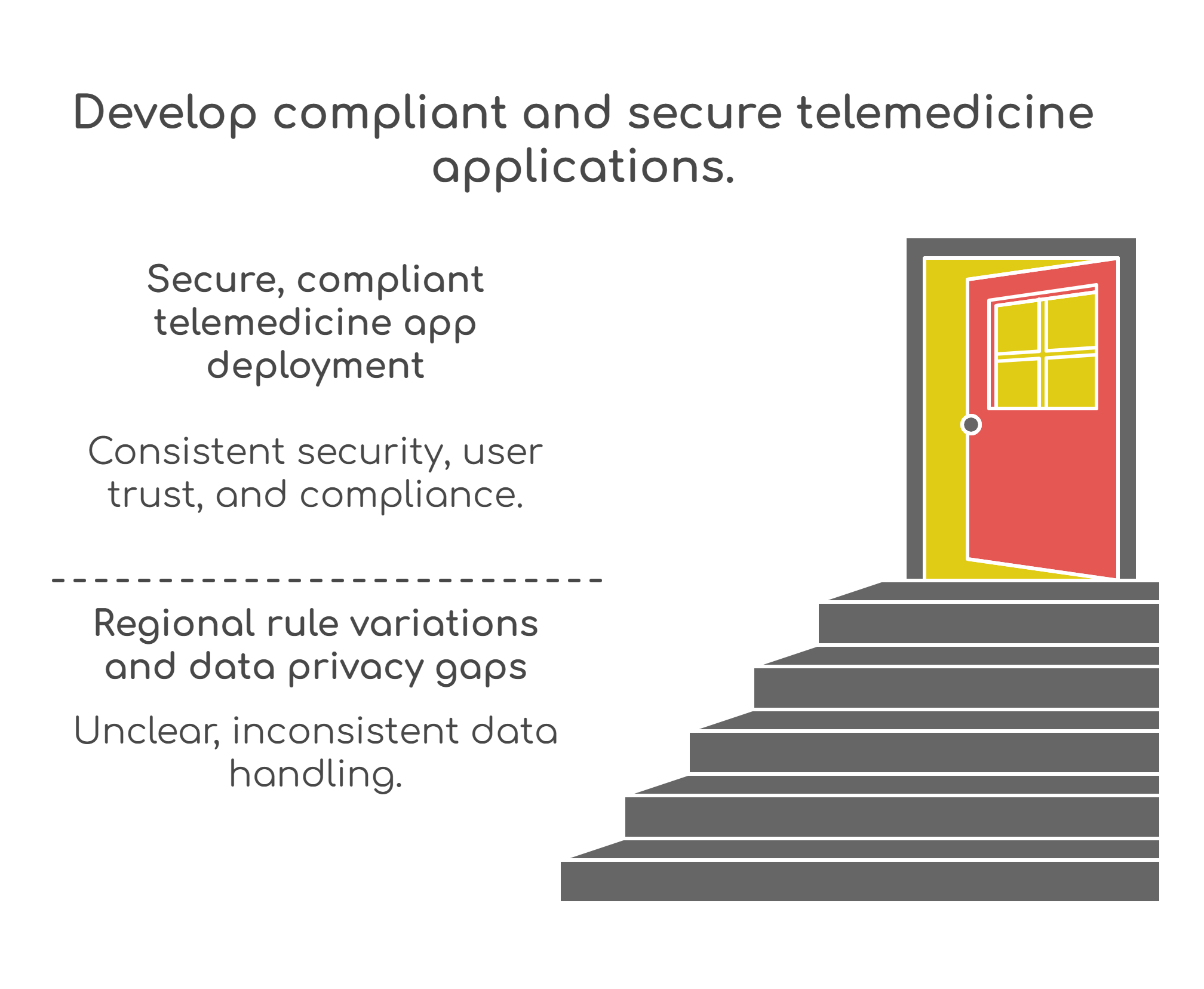
Cyber threats are always changing, so your security should, too.
Do regular security checks, test your defenses, and make sure you're following the rules to stay one step ahead. It's like getting a regular check-up, but for your app.
Even with good security, bad things can still occur, like a server dying, a data leak, or a problem that shuts down your app.
That's why you need a plan for when things go wrong:
It's not about being scared, it's about being ready.
Most telemedicine apps use things like payment systems or pharmacy connections from other companies. Every time you add something new, there's a chance for a security issue.
Pick your partners carefully. Be sure they follow the rules, too, and always use safe connections with good passwords.
Basically, if you're making a telemedicine app, you're building trust. Patients won't care about how good it looks if their personal information is stolen. Doctors won't stay if the app seems unsafe or not well-made.
Make security a key thing from the beginning. If you do it right, you'll not only create a safer app, but you’ll also create something that people trust and like to use.
Okay, so you've got your telemedicine app up and running, great! People dig it, doctors dig it, but how do you turn it into cash?
Even though telemedicine is all about cool healthcare tech, remember it's a business too. There are lots of ways to make money. You just need to pick the right one, or a few that work together, for your users, the market, and where you want to go in the future.
Here's a look at some good ways to make money with telemedicine apps…
It’s simple, patients pay when they book a session with a doctor on your platform. You can either take a cut from what the doctor charges or add a small fee on top of their rate for using the platform. People get this model since it’s like going to a clinic, but easier.
Works well for: Regular doctors, therapists, nutritionists, and patients who see them occasionally.
Instead of charging per visit, offer monthly or yearly plans. These plans could get you a certain number of appointments, chat support, health tips, or faster scheduling.
Examples:
This gets you a steady income and keeps users coming back.
Bonus: You could sell subscriptions to doctors too, giving them fancy stuff like stats, tools, or more patient slots and charge for it.
Offer basic features for free, like general health info, a way to check symptoms, or chatbot help. Then, charge for the good stuff:
This way, people can try your app without any risk and then pay once they see it’s worth it.
Suits: Apps for everyone, esp. if people don’t want to pay right away.
Team up with other health services, Like:
You get cash every time someone buys meds, books tests, or gets insurance through your app.
For Example: Someone talks to a doctor and gets a prescription. Your app suggests medicines from a pharmacy that delivers, and you get paid for each order.

Companies are starting to offer telehealth as a perk for employees. You can license your app to:
They pay either a set fee or per person for using your app under their brand. This brings in bigger deals and helps you grow, especially if you're dealing with businesses.
You can run ads, but be careful with healthcare. Don’t just run any ad. Instead, stick to:
The goal is to keep people trusting you. No one should feel like they have to trade their health or information to see something.
This one’s a bit more advanced and sensitive, but valuable if handled responsibly.
With user consent and proper anonymization, you can use aggregated health data to provide insights to:
Important: This must never involve selling personal or identifiable data, and it must be fully compliant with data privacy laws like HIPAA, GDPR, etc.
If you’re onboarding doctors onto your platform, you can offer a freemium model for them too:
This turns your app into more than just a connector, it becomes a practice management tool for healthcare professionals.
There’s no single “right” model. Many successful apps combine 2-3 revenue streams based on their audience. Here’s a quick guide:
At the end of the day, monetizing a telemedicine app is about building value for both patients and healthcare providers. If your app genuinely makes healthcare more accessible, more efficient, and more personalized, the revenue will follow.
Pick the model that aligns with your product vision, test it in the market, and stay flexible. The healthcare space is evolving fast and your monetization strategy should evolve with it.
Telemedicine has become a core part of how healthcare is delivered today. From remote consultations to digital prescriptions and follow-ups, patients and doctors are both leaning toward more tech-driven, accessible ways to connect. And if you’re planning to build a telemedicine app, you’re stepping into a space that combines real impact with strong business potential.
But where do you even begin?
Here’s a step-by-step guide to help you understand what goes into developing a telemedicine app that’s functional, secure, and user-friendly.
Before jumping into development, ask yourself a few key questions:
Clarity at this stage helps you avoid scope creep and build a product that actually serves its audience.
Explore what’s already out there. Study your competitors and identify what’s working, and what’s not.
Research should include:
This will help you shape your feature list, design, and tech stack smartly.
Every successful telemedicine app needs a few essential features:
You can start with an MVP (Minimum Viable Product) and add advanced features like AI-based symptom checking, wearable integration, and remote diagnostics over time.
Depending on your target platform (iOS, Android, or web), you’ll need to pick the right tech stack. Here’s a general breakdown:
Security should be baked into your tech stack from the beginning. End-to-end encryption, secure APIs, and compliance support are critical.
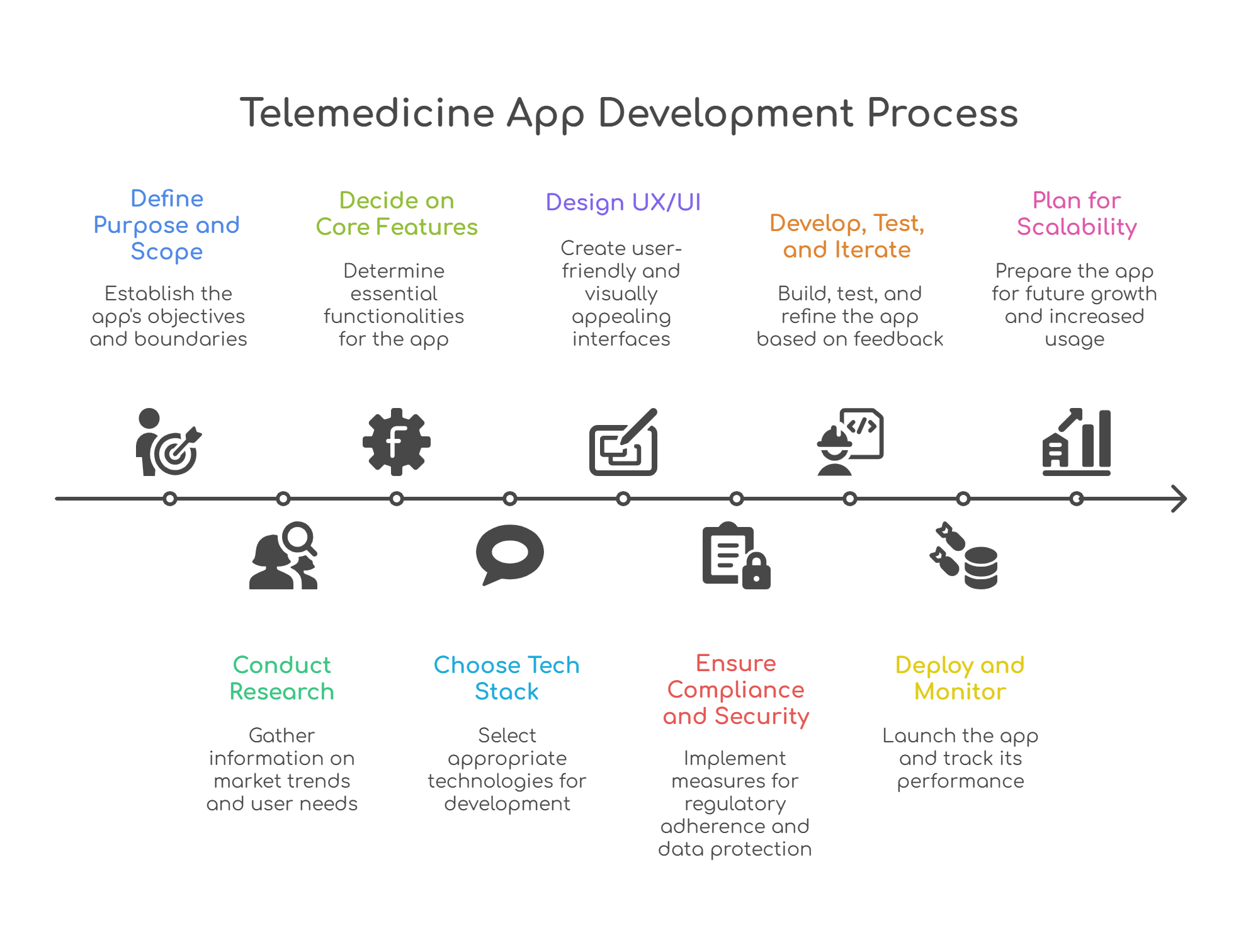
Healthcare is already stressful, so you don’t want your app to add to that. Your design should feel:
Use real-world feedback from patients and doctors during the design phase to validate your ideas.
This step can’t be skipped.
Depending on where your app will operate, you’ll need to meet local or international standards like:
Your app must:
Make compliance a part of your development process, not something you deal with at the end.
Start with an MVP and just the essential features. Then move through:
Remember, in healthcare, even small bugs can create big trust issues. So never rush the testing phase.
Once your app passes testing and compliance checks, it’s time to launch.
Deploy the app on platforms like Google Play Store, Apple App Store, or your own web portal. But your job doesn’t stop there.
Keep an eye on:
Use analytics tools to track how users are interacting with your app, and keep improving.
As more users join, your app should grow without breaking.
This means:
Healthcare moves fast, so your product should, too.
Developing a telemedicine app is a mission towards infusing digital transformation in healthcare. You’re not just building another app; you’re building a platform that might be someone’s only access to care. Focus on what matters: trust, simplicity, and privacy. Nail those three, and the tech will follow.
Building a telemedicine app can be a rewarding investment, but like any tech product, the cost can vary significantly depending on the features, design complexity, and scale you're aiming for.
So, how much does it really cost to develop a telemedicine app?
The truth is, the development cost can range anywhere from $25,000 to over $250,000, depending on how simple or feature-packed your app is.
Here’s a breakdown of what factors influence the cost, and a helpful chart to compare different app types.
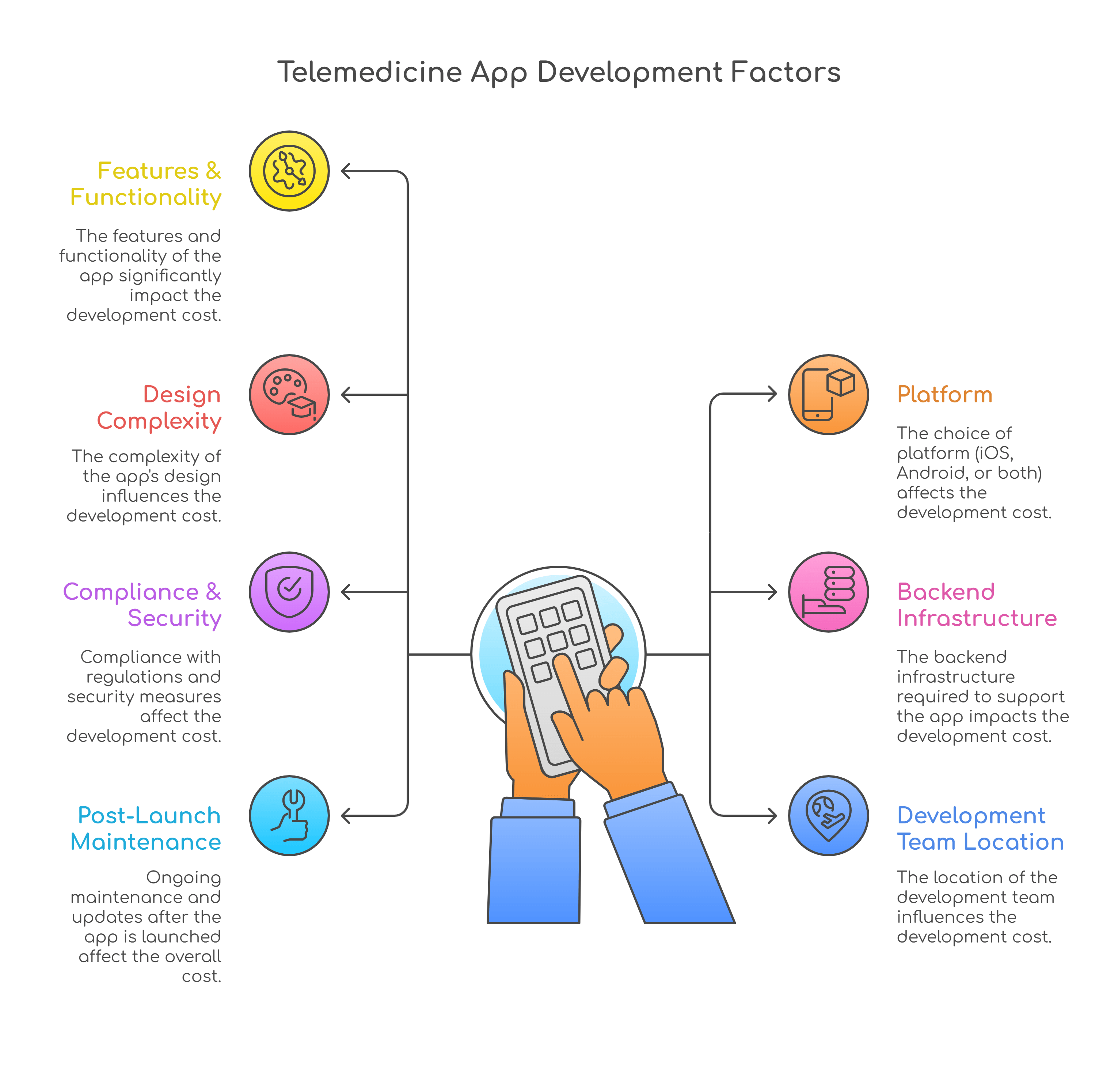
The more features (e.g., video calls, e-prescriptions, AI-based diagnosis), the higher the cost.
iOS, Android, or Web, each platform has its own development cost.
A clean, intuitive UI/UX is essential in healthcare. Custom animations, multi-user flows, or accessibility support can increase design costs.
Secure databases, cloud hosting, API integrations, and real-time video tech come with added cost.
HIPAA, GDPR, or other regional laws require special attention, which adds to development and legal expenses.
Developers in the US or Western Europe charge more than those in Eastern Europe or South Asia.
Bug fixes, updates, customer support, and scaling efforts come with ongoing costs.
If you’re entering the healthcare space, investing in a telemedicine app is about solving access, trust, and care delivery challenges.
The cost of building a telemedicine app depends entirely on what you’re trying to build and for whom. Start small, test often, and evolve based on real user feedback. The more clarity you have upfront, the smarter your investment decisions will be.
At Antino, we build healthcare experiences people can rely on. We, being an experienced healthcare app development company, focus on secure systems, easy-to-use designs, and meeting all the healthcare rules like HIPAA, GDPR, and ABDM. Whether you're a startup trying out your first product or a big healthcare business trying to grow, we customize each thing we do to fit what you want and what your patients require.
From live video meetings to AI help with diagnoses, we've aided top health brands in changing how they provide care, and we're set to assist you too. With Antino, you're getting a tech teammate who knows both the technical side and patient care. Want to change digital healthcare? Let's create something impactful.
